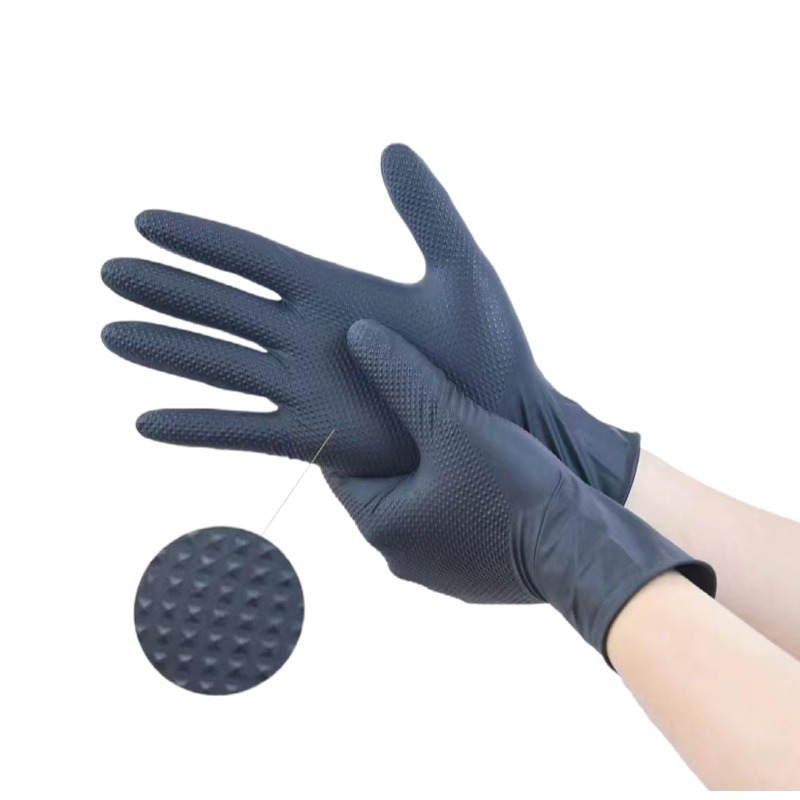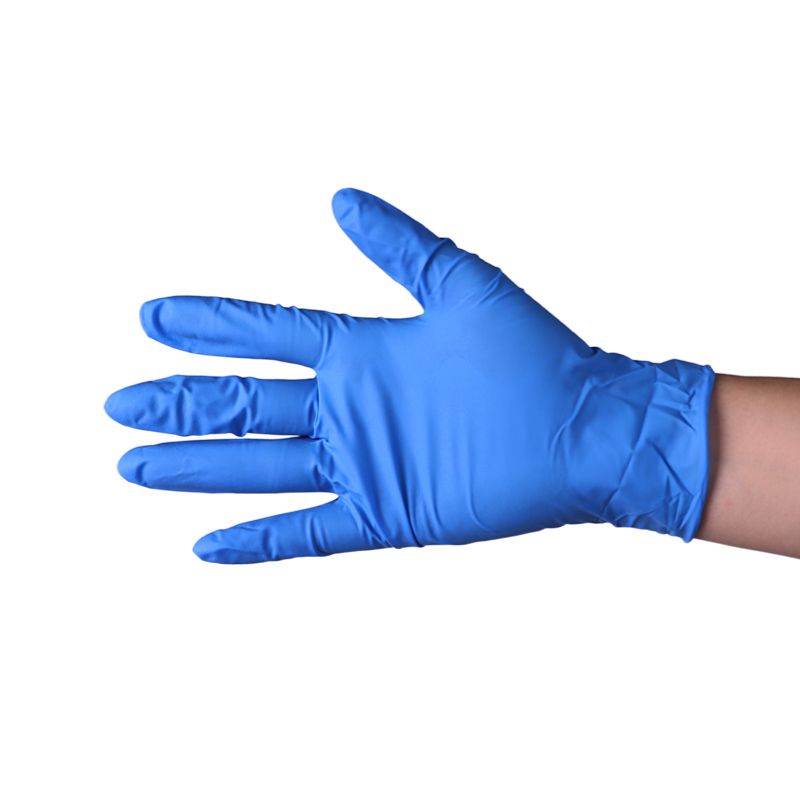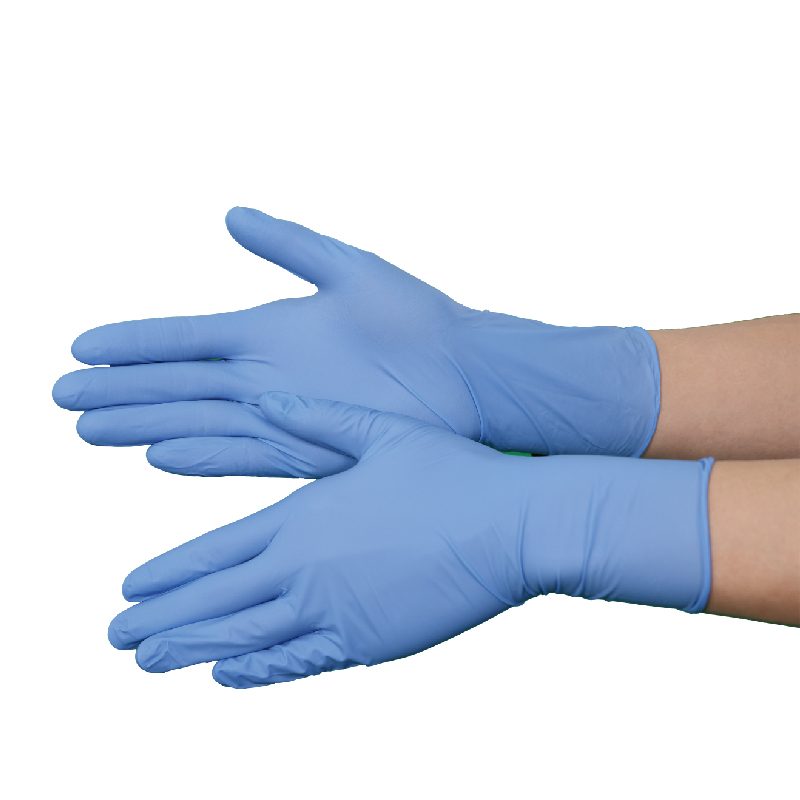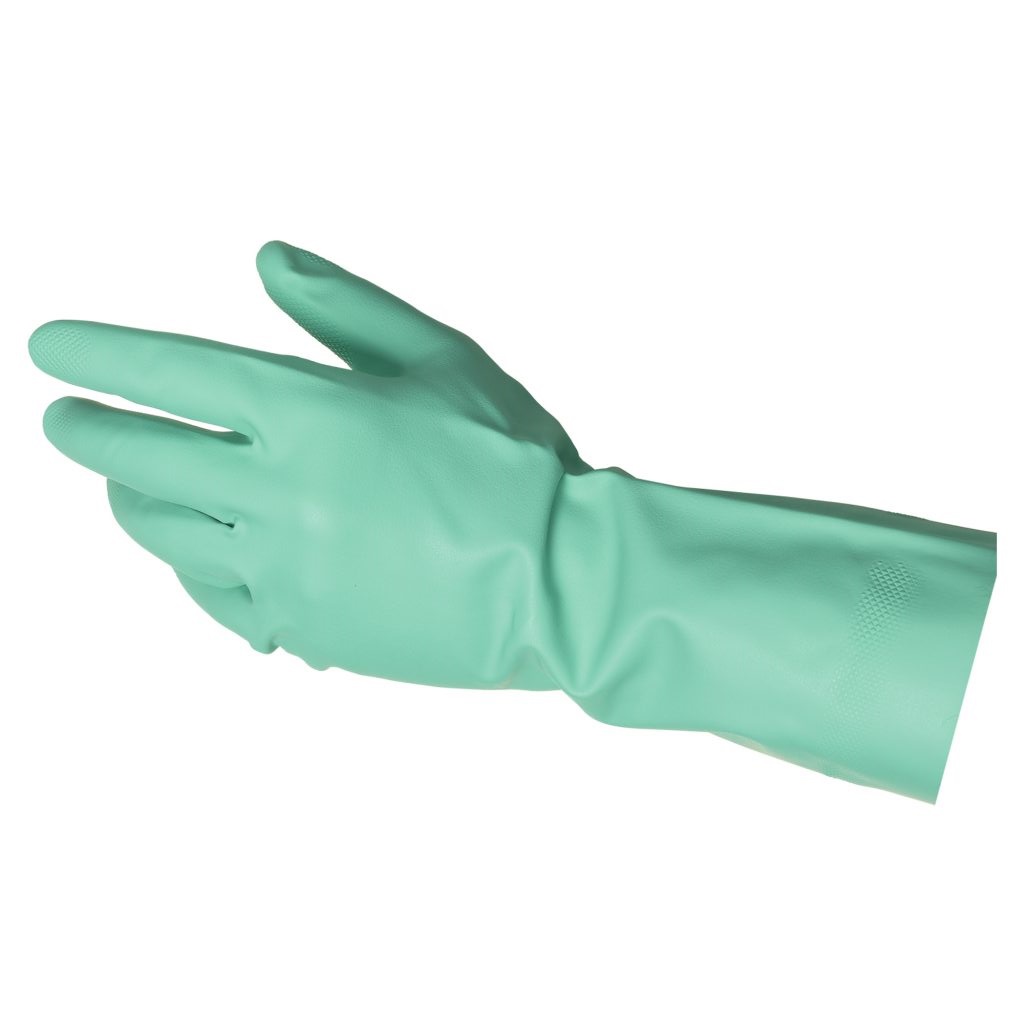Black nitrile gloves have become an increasingly common sight across a variety of industries—from tattoo parlors and auto shops to food processing and healthcare. But are they simply a stylistic preference, or is there more behind the color?
The short answer: black gloves aren’t just about aesthetics. The color of disposable gloves plays a surprisingly important role in hygiene visibility, cross-contamination control, and even user psychology. Let’s explore the science, symbolism, and strategic use behind glove colors, especially black.
What Are Black Nitrile Gloves?
Black nitrile gloves are disposable gloves made from synthetic rubber (nitrile butadiene rubber), known for their chemical resistance, puncture strength, and allergy-safe profile. Unlike latex gloves, nitrile gloves do not contain plant-based proteins and are thus a safer option for people with latex allergies.
While nitrile gloves are available in various colors—blue, purple, green, white—the black variety is specially pigmented for visual and functional reasons. The addition of black pigment does not alter the glove’s core material properties but can influence how it performs in specific work environments.
Why Glove Color Matters More Than You Think
In many industries, glove color is more than a branding decision—it’s a functional code that supports workflow clarity, contamination prevention, and safety monitoring. Here’s how:
1. Contamination Control
Certain colors help detect contaminants or tears more easily. For example:
-
White gloves show blood or dirt clearly.
-
Blue gloves are preferred in food processing for visual contrast against most food types.
-
Black gloves mask stains like grease, ink, or dyes—making them ideal for messy environments where appearance matters.
2. Color-Coding Systems
In healthcare and food production, different glove colors are often assigned to different departments or risk zones. This reduces the chance of cross-contamination. For example:
-
Blue gloves in one area
-
Black gloves for sanitation tasks
-
Purple gloves for handling medications
Color becomes a visual shorthand for procedure adherence and hazard awareness.
3. Psychological Impact
Color can influence behavior. Black gloves are often perceived as more “professional,” “serious,” or “authoritative.” In tattoo studios and salons, this enhances the customer’s perception of hygiene and care. In industrial settings, black gloves project durability and toughness, reinforcing a sense of reliability and confidence in workers.
Why Black? Key Use Cases by Industry
Here’s where black nitrile gloves prove to be more than just good looks:
| Industry | Why Black Gloves Are Used |
|---|---|
| Tattoo & Beauty | Hide ink, dyes, and stains for a clean, professional look |
| Automotive | Conceal grease and oil; reduce visible mess during service |
| Food Service | Provide contrast against food (especially when handling dark sauces) |
| Janitorial & Sanitation | Mask chemical spills and waste material for visual discretion |
| Laboratory & R&D | Color-coded for controlled substance handling |
In all of these sectors, the color black plays an active role, not just a decorative one.
Functional Differences Between Glove Colors
Do black nitrile gloves perform differently from blue or white nitrile gloves? Technically, not much—unless enhanced f
Color itself doesn’t change the material’s resistance to chemicals or durability. However:
-
Black gloves may be thicker in some brands, geared toward heavy-duty use.
-
They’re more likely to be powder-free, meeting cleanroom or lab requirements.
-
Some black gloves are textured for a better grip, suited for tattoo or mechanical work.
Always check the product specs. Not all black gloves are industrial-grade, and not all blue gloves are medical-grade.
Are There Any Downsides?
The biggest downside to black nitrile gloves is visibility—what they hide is sometimes what you need to see. In environments where it’s critical to spot bodily fluids, tears, or chemical spills immediately, lighter colors are often preferred.
For this reason, black gloves are not typically used in surgery, emergency medicine, or sterile environments unless paired with double-gloving strategies.
Also, heat absorption can be higher in black gloves if used in prolonged outdoor settings, potentially increasing hand fatigue in some cases.
A Broader Trend: Gloves as Visual Safety Tools
As glove colors expand across brands and industries, a trend is emerging: gloves are no longer just protective barriers—they are visual tools.
Color serves as:
-
A status indicator (e.g. sterile vs. non-sterile)
-
A process control flag (task-based color assignments)
-
A psychological cue (boosting user confidence or client trust)
In many ways, the rise of black nitrile gloves mirrors this shift: from neutral tool to intentional design.
Choosing the Right Color: Not Just About Taste
When selecting glove colors, consider:
-
Task visibility needs: Do you need to detect fluid or powder?
-
User comfort and perception: What builds client trust or worker confidence?
-
Compliance and safety: Are there industry-mandated color uses?
If black gloves fit your task and environment, they offer a sleek and effective solution. But don’t default to black just because they “look good”—let your usage determine your color.
Final Thoughts
Black nitrile gloves are more than just stylish—they are strategically chosen in industries where visual cleanliness, psychological comfort, and color-coding are key.
Understanding the role of color in glove selection is critical for both safety and efficiency. So the next time you reach for a pair of black gloves, remember: there’s more than meets the eye.







